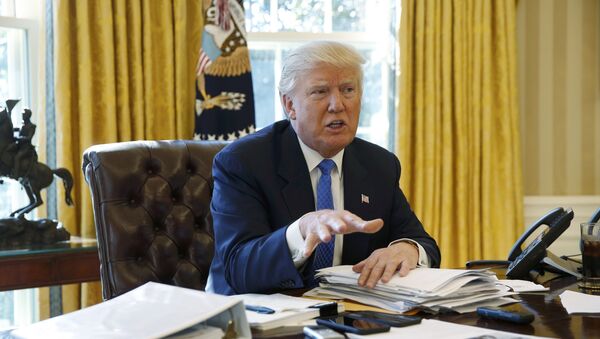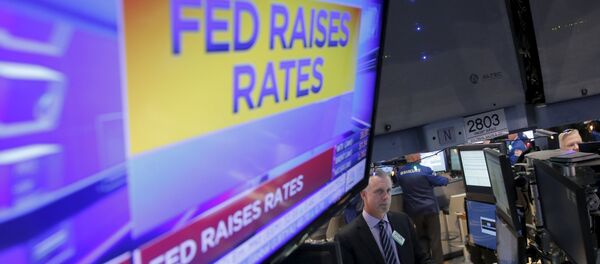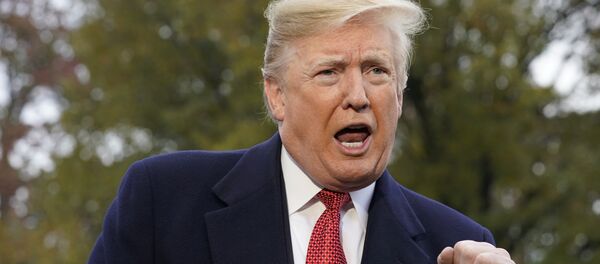Sputnik: What has added up to the already enormous national debt? Follow-up: How much has the government shutdown factored in, if at all?
The government shutdown contributed almost nothing — not because the shutdown cost little, but because the debt is so large. Long-term, the shutdown will have cost around $3 billion. That's one one-hundredth of one percent of the debt.
Sputnik: Some experts say that Trump's tax policy and defense expenses have contributed to the debt. To what extent is this the President's fault?
Antony Davies: In the last fiscal year of the Obama administration, federal receipts (all taxes, fees, tariffs, etc., combined) rose $48 billion. In the first fiscal year of the Trump administration, federal receipts rose $24 billion.
READ MORE: Nobody Except China: The Only Country That Hasn't Seen a Crisis in 40 Years
That difference is so small as to be statistically meaningless. However, let's assume that the entire difference (a slowing in the growth of receipts by $24 billion) was due to Trump's tax policy. That $24 billion is one-tenth of one-percent of the debt.
Sputnik: Trump said that he will rid the country of its debt over eight years. How realistic is this objective?
The federal government actually cut spending (as in spending less in one year than it did the previous year) in 2010, 2012, and 2013, but his was due to the shutting down of extraordinary stimulus spending surrounding the Great Recession. Each year was a 2% cut. Prior to this, the last time the federal government actually cut its spending was 1965.
To balance the budget, Trump would have had to cut the budget by almost 70% and hold it at that level for eight years. That would have meant, for example, shutting down Social Security and Medicare, and cutting the military budget by about 50%.
Sputnik: The President says that better trade deals could ensure the decrease of the national debt. In what manner?
Antony Davies: Trade can impact the debt, but the effect of different trade deals is small enough and the debt is large enough that, for practical purposes, the two are unrelated.
Sputnik: How much is the growth of the national debt is a matter of concern for the US economy and global economy as such?
It's a significant concern. The government doesn't have to pay off the debt. As with a credit card, all it needs to do is to make the minimum monthly payments. In this case, the payments are the interest on the debt.
The government currently pays around 2.6% interest on its debt. At $22 trillion, that's almost $600 billion per year. But, the Federal Reserve has held interest rates so low for so long that it may not be able to raise them again without imposing an unsustainable cost on the government.
Importantly, the government has borrowed so much that it is running out of places to borrow more. American citizens, American companies, and foreigners have been slowing their lending to the government.
The Social Security trust fund, which has lent about a quarter of what the government has borrowed, not only has stopped lending, but will be requiring back the trillions it loaned. That leaves the Federal Reserve to take up the slack.
READ MORE: Gold, Rupee and Markets: Journo Explains India-China Economic Competition
But, unlike these other players, when the Federal Reserve lends to the government, it creates inflationary pressure. In effect, that inflationary pressure robs purchasing power from people's dollars and gives it to the government.
The views and opinions expressed by the speaker do not necessarily reflect those of Sputnik.




